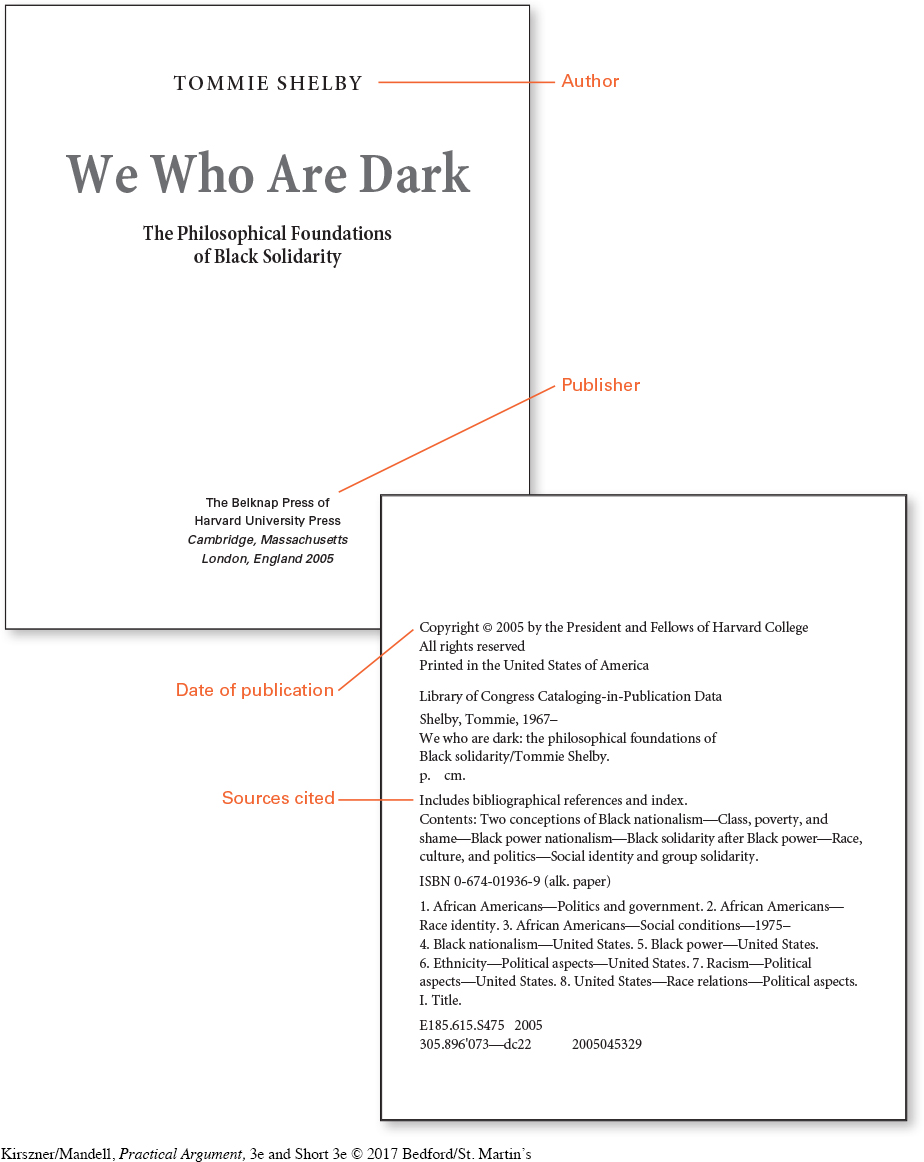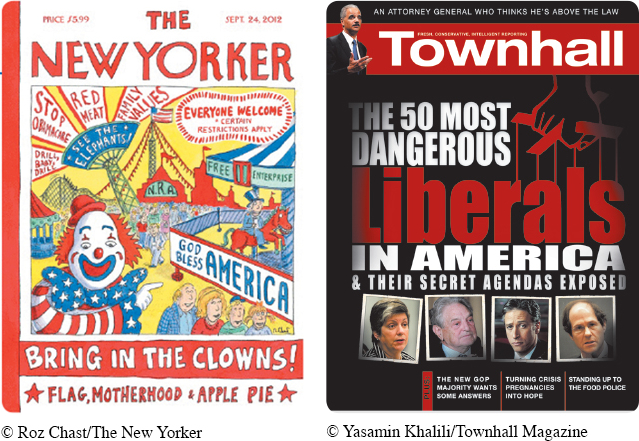Evaluating Sources
Whenever you locate a source—
Page 291

Material that you access online presents particular problems. Because anyone can publish on the Internet, the information you find there has to be evaluated carefully for accuracy. Although some material on the Internet (for example, journal articles that are published in both print and digital format) is reliable, other material (for example, personal websites and blogs) may be unreliable and unsuitable for your research. To be reasonably certain that the information you are accessing is appropriate, you have to approach it critically.
As you locate sources, make sure that they are suitable for your research. (Remember, if you use an untrustworthy source, you undercut your credibility.)
To evaluate sources, you use the same process that you use when you evaluate anything else. For example, if you are thinking about buying a laptop computer, you use several criteria to help you make your decision—
Accuracy
Credibility
Page 292
Objectivity
Currency
Comprehensiveness
Authority
The illustrations below show where to find information that can help you evaluate a source.
Accuracy A source is accurate when it is factual and free of errors. One way to judge the accuracy of a source is to compare the information it contains to that same information in several other sources. If a source has factual errors, then it probably includes other types of errors as well. Needless to say, errors in spelling and grammar should also cause you to question a source’s general accuracy.
You can also judge the accuracy of a source by checking to see if the author cites sources for the information that is discussed. Documentation can help readers determine both the quality of information in a source and the range of sources used. It can also show readers what sources a writer has failed to consult. (Failure to cite an important book or article should cause you to question the writer’s familiarity with a subject.) If possible, verify the legitimacy of some of the books and articles that a writer cites by seeing what you can find out about them online. If a source has caused a great deal of debate or if it is disreputable, you will probably be able to find information about the source by researching it on Google.
Credibility A source is credible when it is believable. You can begin checking a source’s credibility by determining where a book or article was published. If a university press published the book, you can be reasonably certain that it was peer reviewed—read by experts in the field to confirm the accuracy of the information. If a commercial press published the book, you will have to consider other criteria—
You can determine how well respected a source is by reading reviews written by critics. You can find reviews of books by consulting Book Review Digest—either in print or online—
Page 293

Page 294
Finally, you can determine how well respected a source is by seeing how often other scholars in the field refer to it. Citation indexes indicate how often books and articles are mentioned by other sources in a given year. This information can give you an idea of how important a work is in a particular field. Citation indexes for the humanities, the social sciences, and the sciences are available online and in your college library.
Objectivity A source is objective when it is not unduly influenced by personal opinions or feelings. Ideally, you want to find sources that are objective, but to one degree or another, all sources are biased. In short, all sources—
As a researcher, you should recognize that bias exists and ask yourself whether a writer’s assumptions are justified by the facts or are simply the result of emotion or preconceived ideas. You can make this determination by looking at a writer’s choice of words and seeing if the language is slanted or by reviewing the writer’s points and seeing if his or her argument is one-

Page 295
Currency A source is current when it is up-
Comprehensiveness A source is comprehensive when it covers a subject in sufficient depth. The first thing to consider is whether the source deals specifically with your subject. (If it treats your subject only briefly, it will probably not be useful.) Does it treat your subject in enough detail? Does the source include the background information that you need to understand the discussion? Does the source mention other important sources that discuss your subject? Are facts and interpretations supported by the other sources you have read, or are there major points of disagreement? Finally, does the author include documentation?
How comprehensive a source needs to be depends on your purpose and audience as well as on your writing assignment. For a short essay for an introductory course, editorials from the New York Times or the Wall Street Journal might give you enough information to support your argument. If you are writing a longer essay, however, you might need to consult journal articles (and possibly books) about your subject.
Authority A source has authority when a writer has the expertise to write about a subject. Always try to determine if the author is a recognized authority or simply a person who has decided to write about a particular topic. For example, what other books or articles has the author written? Has your instructor ever mentioned the author’s name? Is the author mentioned in your textbook? Has the author published other works on the same subject or on related subjects? (You can find this information on Amazon.com.)
You should also determine if the author has an academic affiliation. Is he or she a faculty member at a respected college or university? Do other established scholars have a high opinion of the author? You can often find this information by using a search engine such as Google or by consulting one of the following directories:
Contemporary Authors
Directory of American Scholars
International Who’s Who
National Faculty Directory
Who’s Who in America
Wilson Biographies Plus Illustrated
Page 296
EXERCISE 8.1
Assume that you are preparing to write an argumentative essay on the topic of whether information posted on social-
Nicholas Thompson, “Bigger Brother: The Exponential Law of Privacy Loss”
USA Today editorial board, “Time to Enact ‘Do Not Track’”
Rebecca MacKinnon, “Privacy and Facebook”